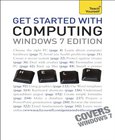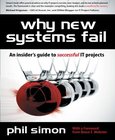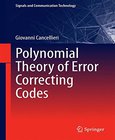May 12 2015 Added eBooks
Download free May 12 2015 Added eBooks
The Photoshop Darkroom 2
Creative Digital Transformations
Award-winning photography/design team Harold and Phyllis Davis are back with a brand-new volume in their new Photoshop Darkroom series. Picking up where their best-selling first book left off, The Photoshop Darkroom 2: Advanced Digital Post-Processing will show you everything you need to know to take your digital imaging skills to the next level. Great photographers know that the best images begin well before the shutter clicks, and certainly well before Photoshop boots up. Harold takes a step back, and shares his helpful tips for capturing the most compelling images possible by keeping in mind what type of post-processing you'll do before you start shooting. You'll also find complete coverage of important topics such as compositing, working with la...
Get Started with Computing Windows 7 Edition
A Teach Yourself Guide
A solid guide to get you up and running quickly and simply on your computer With step-by-step instructions, minimal jargon and detailed explanations of all the technical terms, Get Started with Computing, Windows 7 Edition gives you the confidence to move forward and expand your knowledge. Updated for Windows 7, the book covers all the basics, helping you to find ways of using your computer to suit you. Also included: Health and safety laws and guidelines affecting the use of IT. Creating and maintaining a safe workstation environment . MS Office interface--ribbon, tabs, groups, MSO button and menu, Quick Access toolbar. One and five-minute introductions to key principles to get you started. Lots of instant help with common problems and quick tips f...
Why New Systems Fail
An Insider's Guide to Successful IT Projects
A Fortune 500 manufacturing company spent millions attempting to implement a new enterprise resource planning (ERP) system. Across the globe, a 150-employee marketing firm built and tried to implement a proprietary customer relationship management (CRM) system. For two very different companies doing two very different things, the outcomes were identical. In each case, the organization failed to activate and utilize its system as initially conceived by senior management. And these two organizations are hardly alone. On the contrary, research indicates that more than three in five new IT projects fail. Many miss their deadlines. Others exceed their initial budgets, often by ghastly amounts. Even systems activated on time and under budget often fail to ...
A Digital Phase Locked Loop based Signal and Symbol Recovery System for Wireless Channel
The book reports two approaches of implementation of the essential components of a Digital Phase Locked Loop based system for dealing with wireless channels showing Nakagami-m fading. It is mostly observed in mobile communication. In the first approach, the structure of a Digital phase locked loop (DPLL) based on Zero Crossing (ZC) algorithm is proposed. In a modified form, the structure of a DPLL based systems for dealing with Nakagami-m fading based on Least Square Polynomial Fitting Filter is proposed, which operates at moderate sampling frequencies. A sixth order Least Square Polynomial Fitting (LSPF) block and Roots Approximator (RA) for better phase-frequency detection has been implemented as a replacement of Phase Frequency Detector (PFD) and ...
Polynomial Theory of Error Correcting Codes
The book offers an original view on channel coding, based on a unitary approach to block and convolutional codes for error correction. It presents both new concepts and new families of codes. For example, lengthened and modified lengthened cyclic codes are introduced as a bridge towards time-invariant convolutional codes and their extension to time-varying versions. The novel families of codes include turbo codes and low-density parity check (LDPC) codes, the features of which are justified from the structural properties of the component codes. Design procedures for regular LDPC codes are proposed, supported by the presented theory. Quasi-cyclic LDPC codes, in block or convolutional form, represent one of the most original contributions of the book. ...
2007 - 2017 © eBooks-IT.org





